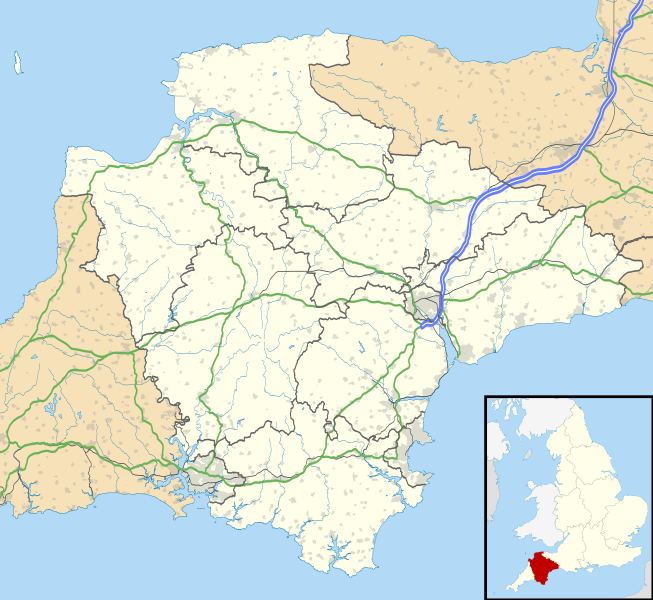



In his book Polwhele argues that the first inhabitants of Britain came from Armenia. And specifically settled in the South Britain’s Devon or Devonshire as it’s also called. Let’s examine some of the arguments mentioned in the book.
Polwhele introduces his theory by saying: ”That the original inhabitants of Danmonium were of eastern origin, and, in particular, were Armenians, is a position which may, doubtless, be supported by some show of authority.” Danmonium being the Latin name for Davon. He goes on to explain:
“Let us consider the testimony of one of our chronicles, which speaks to the point of the Armenian emigration. The Saxon Chronicle positively asserts, that “the original inhabitants of Britain came from Armenia, and that they seated themselves in the south-west part of the island:”
The Saxon Chronicle is said to have been written by a monk, at Lincoln: And similar chronicles were kept by the most learned monks in several monasteries throughout the kingdom. The monk of Lincoln seems to have been well informed: And there is no more reason to dispute the authority of the passage before us, than that of any other part of the book. For it is not a conjecture: It is not hazarded as an opinion: It is a positive assertion and relation of an event, as a thing generally known and understood to be true.”
Polwhele also discusses similarities between early Armenian and Briton living habits including caverns which are found in abundance in Devon. He says:
“That these caverns were places of temporary residence in the time of war, wither the Danmonii retired, for the security of their persons, their domestic furniture, and their warlike stores, I should judge not only from the disposition of the Aborigines so congenial with the oriental turn of mind, but from the resemblance, also of our Danmonian excavations to those in Scotland and Ireland, which are allowed to be military retreats. But, whatever was their use, they were very similar to the caves of the eastern nations, and especially of Armenia.”
“That the Asiatics, from whose country the Danmonians are supposed to have emigrated, ” made them the dens which are in the mountains, and caves, and strongholds,” is evident, both from sacred and profane history. There is a remarkable passage in Xenophon, describing the caves of the Armenians. Xenophon informs us, “that the houses of the Armenians were under-ground — that the mouth or entrance to these subterraneous habitations was like that of a well, but that underneath, they were wide and spreading — that there were ways for the cattle to enter, but that the men went down by stairs.” In Armenia, at this day, the people dwell in caverns. “In a narrow valley (says Leonhaut Rauwolf ) lying at the bottom of an ascent, we found a great stable, wherein we went. This was quite cut into the hill : And so was that wherein we lodged the night before. So that you could see nothing of it, but only the entrance. For they are commonly so in these hilly countries, under-ground, that the caravans may safely rest there, and defend themselves from the cold in the winter. This stable, twenty-five paces long, and twenty broad, was cut out of a rock.” These descriptions of the Armenian caves agree, in several points, with that of the cave near Plymouth, as well as the Cornish caverns. Xenophon’s cave is fub-terraneous : So is that near Plymouth : The apertures of both are narrow : And both caverns are, afterwards, sufficiently capacious.”
He goes on to describe place names: “I observe that the caves in Devon (so like the under-ground habitations of Armenia) are mostly in the Southams, at no great distance from the river Arme, or the town of Armenton, on the banks of the Arme, where the emigrators from Armenia are supposed to have first settled.”
The book further describes many common characteristics of Britons and Armenians. From the warlike spirit, clothing, social structures, names and living habits. Vallancy, on the authority of Sir George Yonge adds that “in S.W. of Dovenshire, there is still a river, called Armine ; and the town and hundred are called Armine-ton to this day.”
Polwhele finally concludes as follows:
“That the settlers in this island, were not a colony from Gaul, has been proved, on every view of the subject. And the vulgar theory of the original European plantations, would be abandoned, I think, on all hands, after a candid and liberal investigation of it. To such an investigation I should be happy to excite the learned. From the dubiousness of the common theory, I had a right to form a new hypothesis. And I have imagined a rapid emigration to these islands, for the most part by sea, from Armenia… I have not grounded my supposition on the sole authority of the Saxon Chronicle. The evidence of Caesar himself, is strong in my favor : And the voice of the Greek historians and geographers is still more decisive. But the character of the orientals, so strikingly contrasted with that of the Europeans, and yet according with that of the aboriginal Danmonii, seems almost to determine the controversy. The orientals, at the time of their first emigration into different countries, were imprest with various traits of character ; such as we have discovered in their modes of settlement, their civil government, their religion, their commercial communications, their language and learning, their genius and their customs. The wandering spirit and patriarchal policy of Armenia.”
Filed under: Uncategorized


















